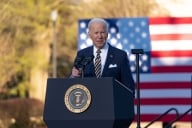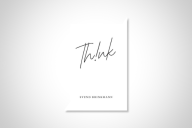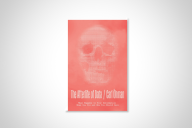You have /5 articles left.
Sign up for a free account or log in.
With the highest office in the land occupied by a troll (and through no fluke: trolling constitutes the form, substance and sole consistent principle of the man’s entire political career), it certainly feels as if things are now on the other side of a tipping point.
The casual, habitual acting-out of grandiosity or malice has always been among the possibilities afforded to anyone with a modem -- but as an indulgence, not a norm. The Web 2.0 as an emancipatory supplement to the public sphere probably deserves its own floor in some Museum of Countercultural Visions. The idea of anonymity or pseudonymity giving voice to the powerless once sounded full of democratic potential, although it proves difficult to credit after scanning YouTube comments for half an hour.
The promise of liberation gave way at some point to disinhibition, mostly. Disinhibition combined with great power is dangerous mixture, volatile at best, and, as with dynamite, unlikely to grow more stable over time.
A number of scholarly books on memes, tweeting, comments-field commentary and other modes of contemporary digital communication have come out. And given the circumstances, I’ve tried to read them -- only to be reminded from time to time of Jackie Gleason’s complaint about reviews of TV shows in the newspapers: he said they were like describing an automobile accident to the eyewitnesses. The prospect of the description running to full monographic length is enough to make the brain and eyeballs itch. With most of the recent volumes on digital discourse, I found it hard to resume reading. An exception worth mentioning is Whitney Phillips and Ryan M. Milner’s The Ambivalent Internet: Mischief, Oddity and Antagonism Online (Polity Press).
Phillips, an assistant professor of literary studies and writing at Mercer University, approaches the routines and artifacts of online communities as a folklorist. Milner is an assistant professor of communication at the College of Charleston. The authors, who identify themselves as millennials, acknowledge having been shaped by the culture they analyze. Converging on the study of memes, trolling, creepypasta and other practices from their different disciplinary backgrounds, they find sharp distinctions between on- and off-line life to be, at this late date, analytically dubious at best. We cross the line too often to pay all that much attention to it. And the forms of humor, storytelling and the like now constantly generated and circulated online are best understood as examples of the “vernacular creativity” typical of folklore.
In this, Phillips and Milner take their cue from Alan Dundes, one of major American folklore scholars of recent decades, who expanded the definition of “the folk” to cover “any group of people whatsoever who share at least one common factor.” Whatever a group may share to begin with, it almost inevitably accumulates a stock of common experiences, lingo, habits, symbols and so forth. The Amish have their folklore, and the guys in Cell Block D have theirs, no less exacting in its traditions but less appealing to tourists.
Easy to see, then, why many items of online folklore -- memes and jokes especially -- seem to be the culture of specific in-groups and incomprehensible or off-putting to outsiders. But that’s only part of the story. The power to cut, paste, blend, spoof or otherwise transform all that’s available in a digital format (imagery, audio, texts, etc.) renders just about everything into potential grist for expressive experimentation. At the same time, the audience for any given digital artifact is impossible to predict with any confidence.
Even communication between two people who know each other well can be ambiguous, of course, and the finer shades of nuance don’t stand a chance. Hence Poe’s Law, which the authors define as “postulates that sincere extremism online (manifesting as bigotry, conspiracy theorizing or simply being wrong about something) is often indistinguishable from satirical extremism.”
Like earlier manifestations of folk culture, then, the forms that Phillips and Milner discuss are prone to “blurring the lines between structure and play, formal and folk, commercial and populist.” But the newer kinds constantly run the risk of generating more than confusion or distaste among those not in the group. What has emerged is a culture of extreme ambiguity or, in the authors’ preferred expression, ambivalence -- “that which is difficult to classify or is otherwise strange, creepy or some combination of funny and offensive ….” They note:
“Apparently straightforward demarcations between author and audience, between this text and that text, between universal meaning and audience-specific meaning, don’t need much jostling before they start to crumble.”
Which can, of course, be a good thing: the conditions for creative experimentation, for the sort of activity the authors celebrate in passages that sound much like cultural-studies celebrations of agency from not so long ago:
“Women, queer people, trans people, people of color, people with disabilities and members of economically disenfranchised populations -- whose voices have historically been undervalued or muted -- can [using digital culture] push back against regressive hegemonic forces, and engage in assertive, confrontational and empowering expression.”
But they have also seen “how community formation, cultural exchange and generally having a fun and funny time -- presumably good things, pro-social things -- can simultaneously serve to police community boundaries, encourage cultural myopia and generally make outsiders miserable.”
I expect to have occasion to return to this topic in the future, as developments may warrant. But for now, I will end with a link to something I wrote about the research of one of the authors a couple of years ago and forgot until about halfway through The Ambivalent Internet, one of the more interesting books I’ve read so far this year.








